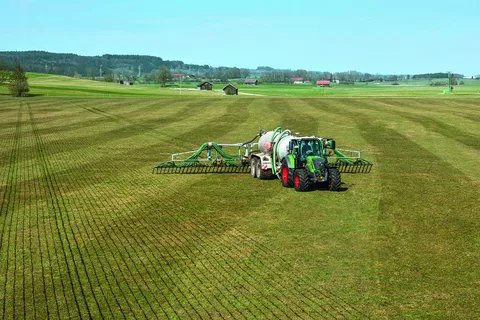Modern agriculture has evolved significantly, thanks to technological advancements that improve efficiency and productivity. One of the key innovations transforming farming practices is the use of tractor guidance system. At the heart of these systems are sensors, which play a critical role in ensuring accuracy, safety, and efficiency.
Understanding Tractor Guidance Systems
Tractor guidance systems are technologies designed to assist farmers in steering and controlling tractors with precision. These systems can operate automatically or semi-automatically, reducing human error and improving field operations. By integrating GPS technology and advanced sensors, modern tractors can navigate fields efficiently, minimizing overlap and optimizing fuel use.
The Role of Sensors in Tractor Guidance
Sensors are the backbone of modern tractor guidance systems. They collect real-time data on various factors, including tractor position, soil conditions, speed, and terrain. This information is crucial for the guidance system to make precise adjustments, ensuring the tractor follows the optimal path.
Some common types of sensors used include:
- GPS Sensors: Provide accurate location data to help the tractor maintain straight or curved paths.
- Inertial Measurement Units (IMUs): Track the tractor’s movement, tilt, and orientation for better stability.
- Proximity Sensors: Detect obstacles or uneven terrain to prevent accidents and equipment damage.
Benefits of Sensor-Driven Guidance Systems
The role of sensors in modern tractor guidance systems extends beyond mere navigation. These sensors contribute to:
- Improved Efficiency: Sensors help reduce overlaps and missed areas during planting or spraying, saving time and resources.
- Enhanced Safety: Real-time data allows the system to avoid obstacles and maintain stability on challenging terrains.
- Reduced Environmental Impact: Precise guidance reduces fuel consumption and minimizes unnecessary chemical usage on crops.
Future Trends in Sensor Technology
The future of tractor guidance systems looks promising, with ongoing advancements in sensor technology. Innovations like LiDAR sensors, machine vision cameras, and advanced soil sensors are expected to enhance the accuracy and capabilities of these systems. As sensors become more sophisticated, farmers can expect smarter, more autonomous tractors that further improve productivity and sustainability.
Conclusion
The role of sensors in modern tractor guidance systems is indispensable. From providing precise navigation to improving efficiency and safety, sensors are the key enablers of modern smart agriculture. As technology continues to advance, their importance in agricultural machinery will only grow, driving the future of precision farming.


